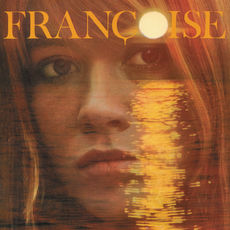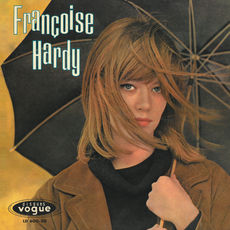Some talented artists are able to capture the essence of their time, while others, though equally as talented, never manage to do so. Françoise Hardyunambiguously belongs to the first category. The encounter between the singer of Message personnel and the yé-yé movement is as mysterious and miraculous as love at first sight. Indeed, nothing preordained the young lady to be catapulted onto the stage – and even more so on this particular stage. Up until her first hit, she just went quietly on her merry way, with passion and commitment of course, but never relying on exacerbated glamour, like so many emerging stars. But isn’t it precisely this distance that did make her a star? “Hard to get, hard to forget”, as the saying goes. With her shyness and emotionalism, Françoise Hardy probably – subconsciously – built an ingenious system that eventually led her to become exceptionally popular!
The love story between the singer and music started around the age of 12. Compulsively buying partitions and records, and passionate about the radio (she discovered rock’n’roll and country music on Radio Luxembourg!), she became a devoted music fan, always on the lookout for the latest releases. Her tastes ranged from Jacques Brel to Paul Anka, Elvis Presley or even Georges Guétary. A precocious teen, Françoise Hardy earned her high-school diploma at 16 and enrolled at the university to study German at La Sorbonne. But because she was two years in advance, she allowed herself to dedicate more time to her passion than her studies. She played the guitar assiduously (a gift from her father for her graduating high-school), composed songs and auditioned for record companies. She first applied to Pathé-Marconi, and though she wasn’t hired, this initial experience allowed her to hear her voice recorded for the first time. At the same time she enrolled at the Petit Conservatoire de Mireille, where she made her first televised appearance on the ORTF (Office de radiodiffusion-télévision française − French radio and television broadcasting agency), on February 6th 1962. Keeping up with her series of auditions, Françoise Hardy eventually landed at Vogue – that had just signed another young singer, Jacques Dutronc… her future partner. It was Jacques Wolfsohn, one of the company’s art directors, who allowed the young lady to record her first EP.
According to experts, yé-yé started at the end of the year 1961, with the early days of twist. It’s to oppose the movement of French text songs – the one from Saint-Germain-des-Prés and Les Trois Baudets – that this brand name was created. This music current, which lasted until the advent of pop in the middle of the 1960s, more specifically refers to French songs adapted from English-speaking hits. In 1963 sociologist Edgar Morin referred to the singers of these hits (as well as their numerous fans) as “Yé-yés”. Among the most emblematic artists in this current were Johnny Hallyday, Sylvie Vartan, Richard Anthony as well as Les Chats sauvages, who were regularly featured on the radio station Europe 1, on the show Salut les copains – for which the paper version (released from 1962) is famous for its pictures by Jean-Marie Périer. And that’s where Françoise Hardy turned out as well, and became the lover and muse of the photographer, and in these circumstances, one of the central figures of the yé-yé movement.
Create a free account to keep reading






